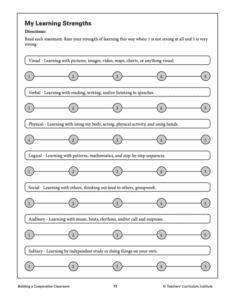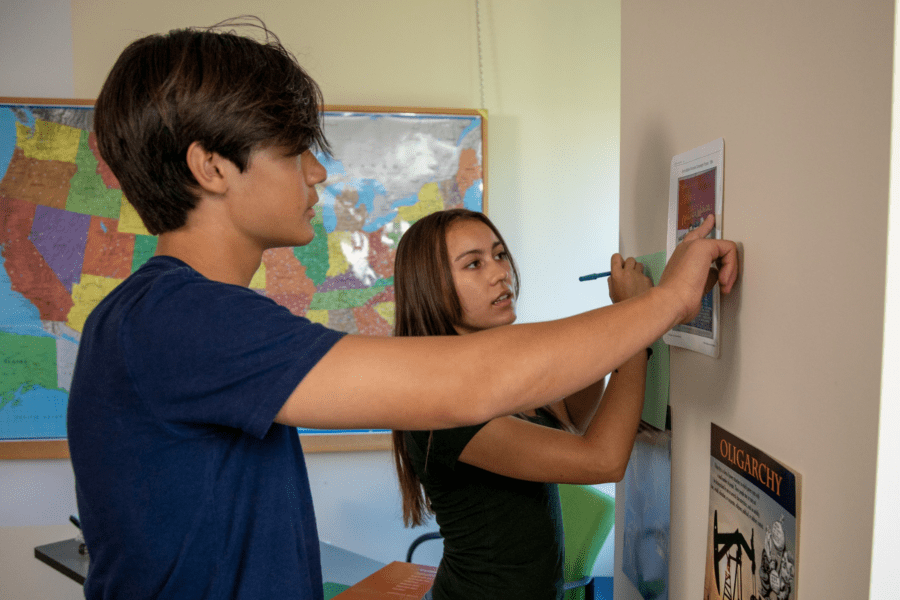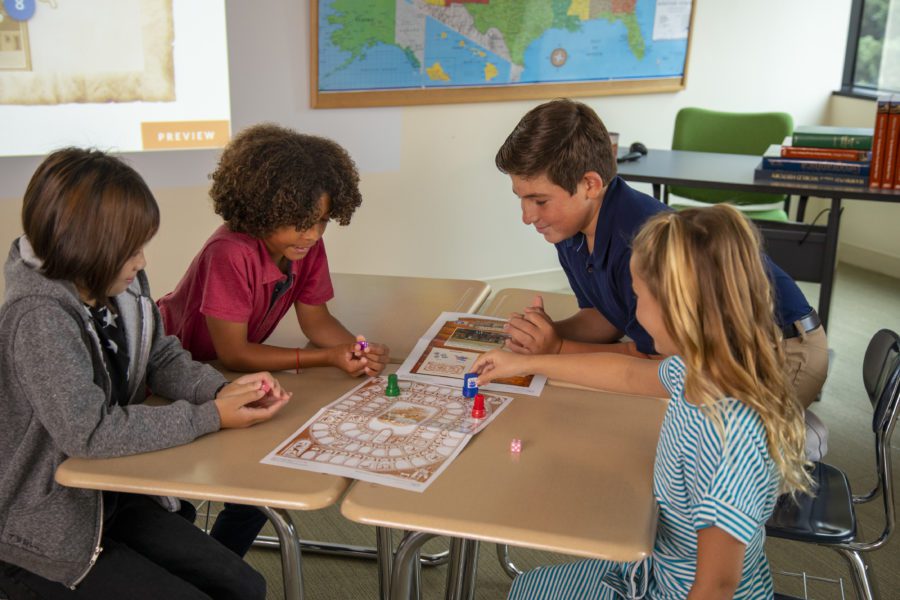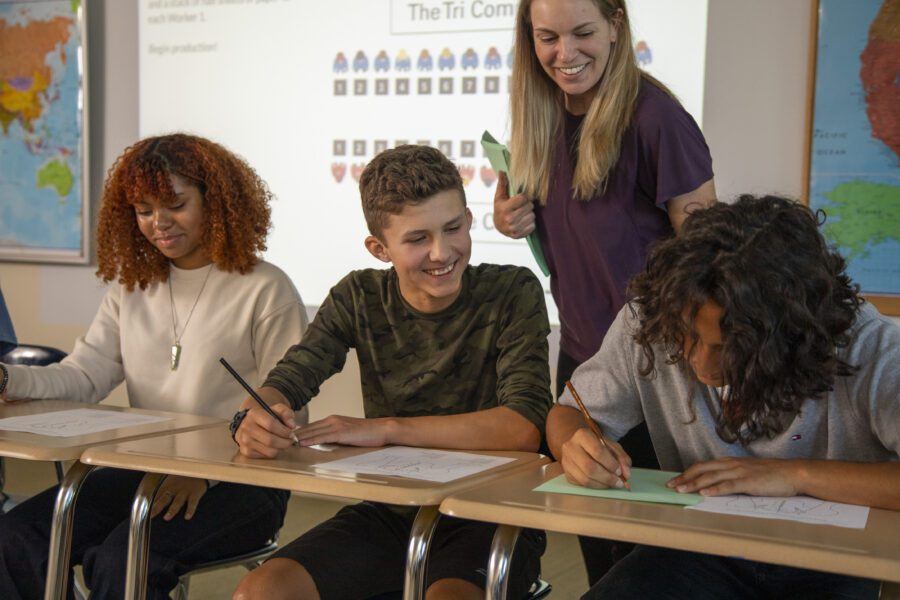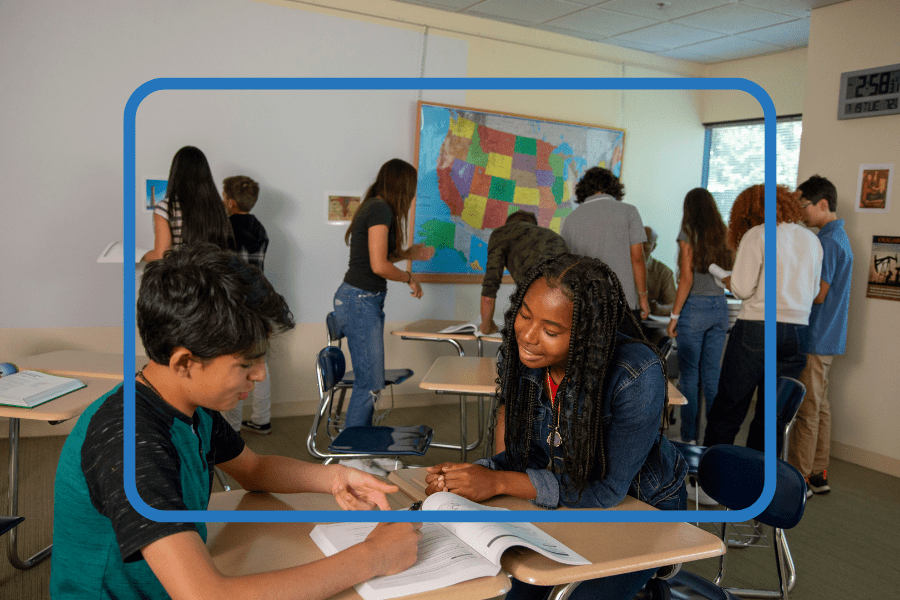
Educators know that a strong classroom community is essential to student success. Building an environment where students feel connected, valued, and engaged is crucial, but knowing exactly how to do this can be challenging. While there are endless ways to build a strong community, you can begin by identifying the essential components: establishing trust, maintaining community throughout the year, and anticipating challenges.
The Importance of Building a Classroom Community
As students begin the school year, they enter a new environment filled with unfamiliar faces and expectations. Establishing a classroom community early in the school year helps to create a sense of belonging and safety for students. When students feel connected to their peers and teachers, they are more likely to engage in learning, take academic risks, and contribute to classroom discussions.
A well-established classroom community is built on trust, respect, and mutual support. This foundation is essential for creating an environment where students feel comfortable expressing themselves, exploring new ideas, and collaborating with others. As Deanna Morrow, Senior National Account Manager at TCI, puts it, “You build classroom community by building trust so that students are willing and excited to take risks. Because they’re successful in something else in their classroom, they’re willing to take risks and they dive deeper into the content and are invested in one another.” Learn how TCI supports teachers in creating engaging learning environments.
Back-to-School Icebreakers and Community-Building Activities
The start of the school year is the ideal time to focus on activities that build trust and respect among students. Icebreakers and team-building exercises can serve as the foundation for creating trust. Whether it’s back-to-school time or any other part of the school year, these activities aim to get to know students and provide opportunities for connection.
Identify Learning Strengths
Help students identify their strengths and learning styles with a quick assessment (there’s one available in TCI’s Cooperative Classroom Toolkit). Through the assessment, students can explore their affinities for different learning styles, including visual-spatial, mathematical-logical, musical-rhythmic, and interpersonal. This reflection helps them understand their strengths and learn how to leverage them while developing skills in other modalities.
After forming groups, students can share something that represents their chosen modality. For example, if they were musical-rhythmic, they could represent that through dance, playing an instrument, or reading music. This activity builds trust and encourages students to rely on each other’s unique abilities. “It’s about helping students see that they can depend on each other and that their contributions are valuable,” says Morrow.
Personal Mosaics
Another way to get to know students is to have them create mosaics about their personal lives. These mosaics help students to learn more about each other. Their mosaics can represent important aspects of their lives, such as family, hobbies, interests, favorite colors, and more. For younger students, the information shared can be simpler and more straightforward, while older students can delve into more detailed and complex aspects of their lives.
This exercise allows students to share something meaningful about themselves while reflecting on commonalities they might have with peers. Later in the year, students can build on this experience to represent their understanding of academic topics through mosaics.
Maintaining Classroom Community Throughout the Year
Building a classroom community is not a one-time effort–it requires ongoing attention and reinforcement. While icebreaker activities might be more appropriate for the beginning of the back-to-school season, there are many ways to bring community building into your classroom routines throughout the school year.
Classroom Goal Setting
Setting goals together lets your students take the lead in shaping what they want their classroom community to look like. Discuss with your class which community-building goals matter most, finalize them together, and post them somewhere visible in the classroom. Make sure to revisit them over time to ensure they still represent what the classroom cares about. A fun way to encourage student accountability is to reflect on students’ progress toward the goals.
As Morrow shares, “One of the things that I used to do with my students is to create attainable and measurable goals. We would start with what our year-long goal is, then chunk it into quarter or semester goals, and then weekly goals. We would post the goals on the board and each student would write in their interactive student notebooks what their weekly goals were and then two or three bullet points that they could check off as they work towards their goals.”
Students can engage in the goal-setting process individually and within their class community by creating individual goals and monitoring their progress. Regularly setting and reviewing goals helps keep students engaged and focused on their personal and academic growth.
Interactive Student Notebooks
Using student notebooks can be an effective way for students to organize their thoughts, track their learning journey, and reflect on their progress. When integrated into daily routines, these notebooks help reinforce a sense of community and keep students connected to their learning objectives.
Each interactive student notebook is built around three core components: a Preview activity that activates prior knowledge, graphically organized reading notes for gathering and organizing information, and a Processing assignment to demonstrate understanding of the lesson’s concepts and content. As Morrow explains, “The interactive student notebook becomes a complete journal, allowing students to write down every thought and every processing assignment while keeping an organized journal of the content they’re learning for the subject. It’s the single most powerful teaching tool ever created.”
Overcoming Common Challenges in Classroom Community Building
One of the most common challenges teachers face when trying to build a classroom community is the perception of not having enough time. But, as Morrow says, “When you prioritize, you have time for the things that are most important for you.” It’s important to invest time in establishing relationships and teaching classroom procedures.
Recent research strongly supports the idea that investing time in building relationships and establishing classroom procedures early in the school year can significantly reduce disciplinary issues and foster a more focused learning environment. Studies have shown that when teachers prioritize relationship-building with their students, there is a marked decrease in disruptive behaviors, and students become more engaged academically.
For instance, a study highlighted by Edutopia found that classrooms where teachers actively worked on establishing, maintaining, and restoring relationships saw a 75 percent reduction in disruptive behavior and a 33 percent increase in academic engagement. This approach ensures that students feel a strong sense of belonging and trust, directly impacting their classroom behavior and focus.
Furthermore, fostering high-quality teacher-student relationships has been linked to improved student well-being, higher academic achievement, and reduced behavioral problems. Teachers who invest in these relationships not only create a more positive classroom atmosphere but also experience less stress and greater job satisfaction, contributing to a more effective teaching environment overall.
Maintaining the community you’ve established in your classroom can be challenging. It’s crucial to continuously nurture relationships and set attainable goals that align with the classroom’s objectives. “If you make it a priority, it will happen, and you’ll have a wonderful year,” says Morrow. By staying committed to these practices, teachers can ensure their classroom community remains strong and supportive.
Building a strong classroom community is foundational to student success. When educators prioritize trust-building activities, maintain a sense of community throughout the year, and proactively address challenges, they create an environment where students feel valued, supported, and eager to learn. These strategies not only set the stage for a successful school year but also equip students with the interpersonal skills they need for lifelong success. Investing time and energy into fostering this sense of community sets the foundation for students to excel academically and develop the confidence to navigate future challenges with resilience. The impact of a connected classroom is profound, shaping the academic and personal growth of every student.
